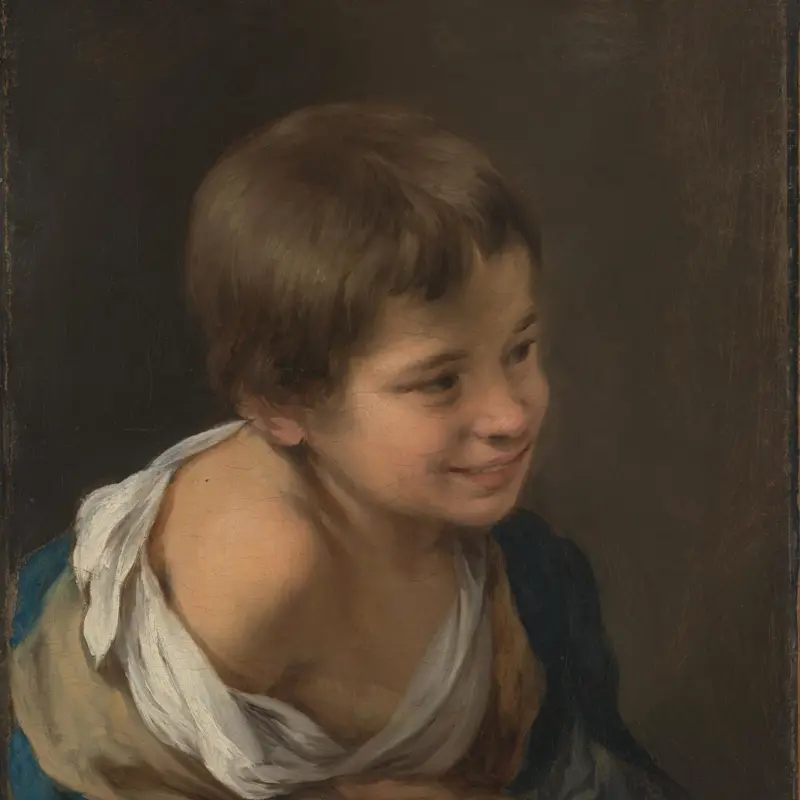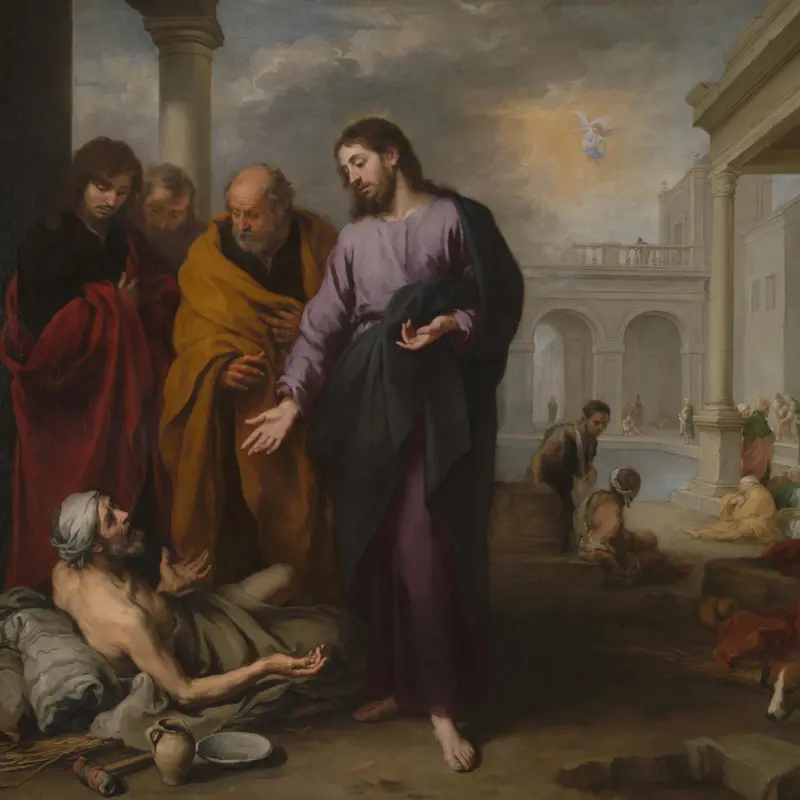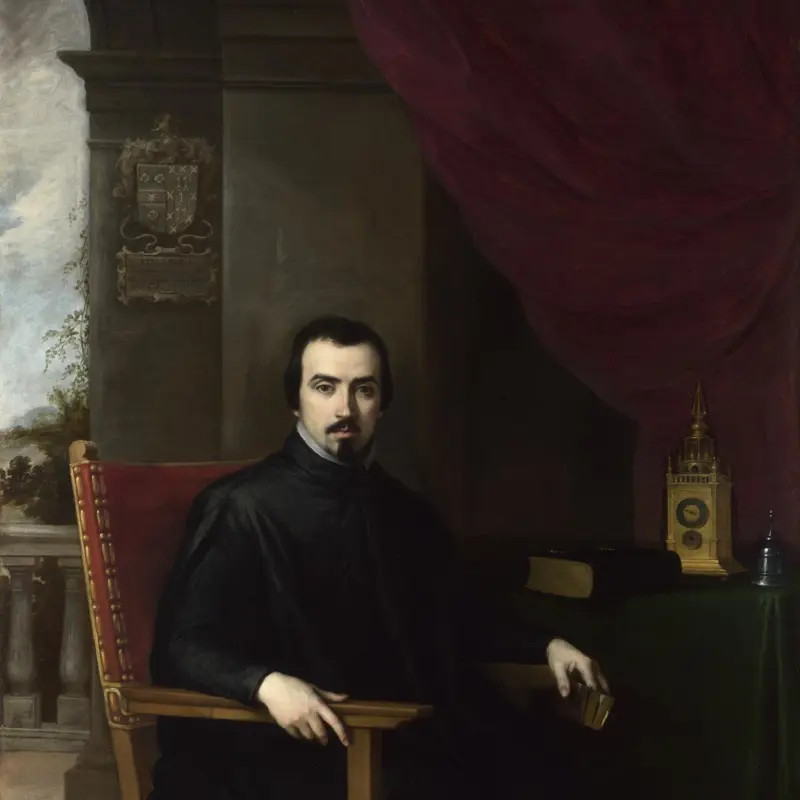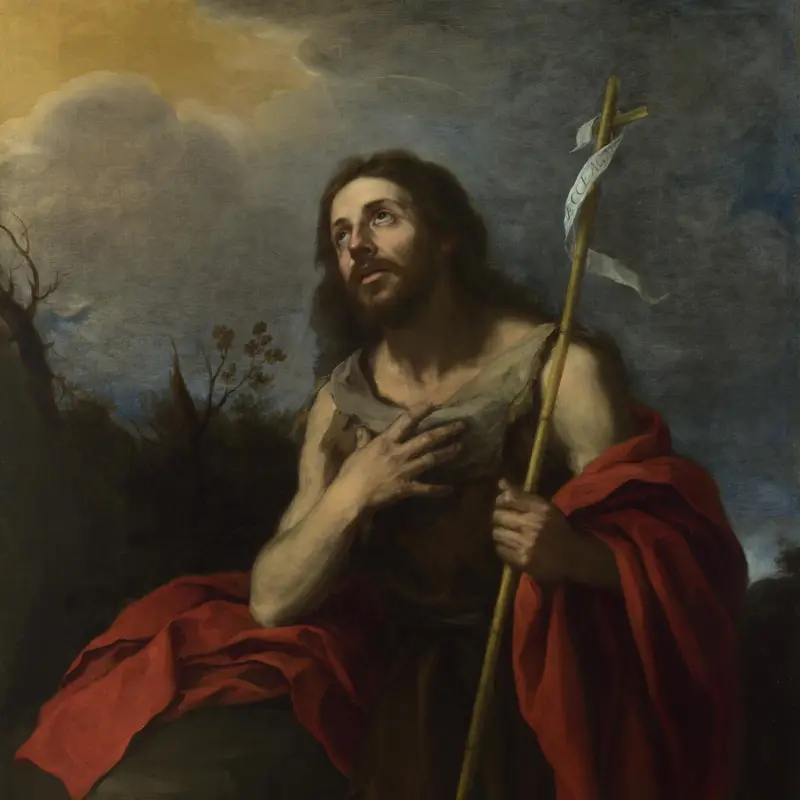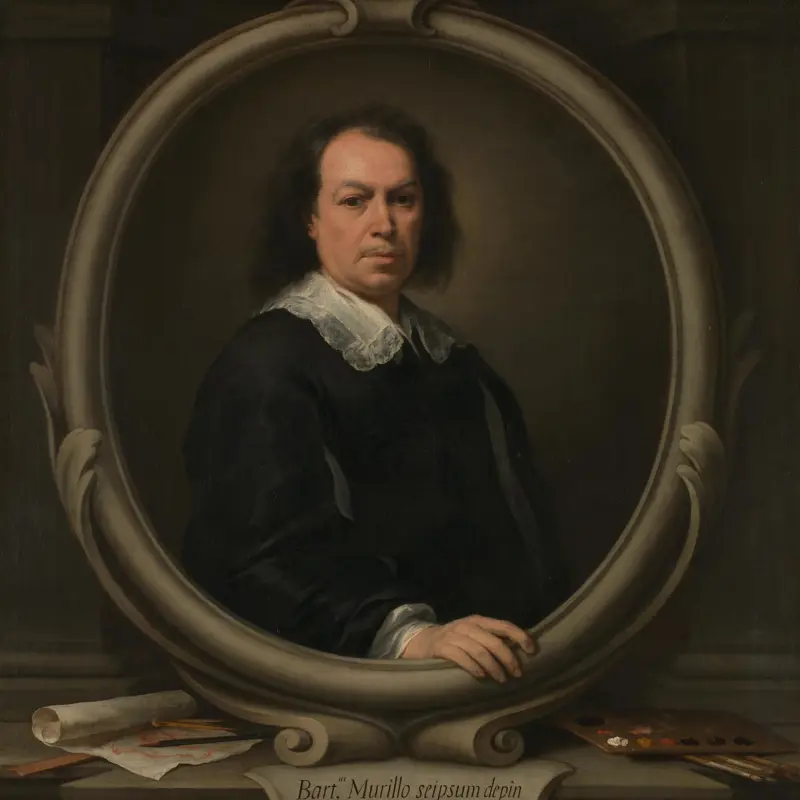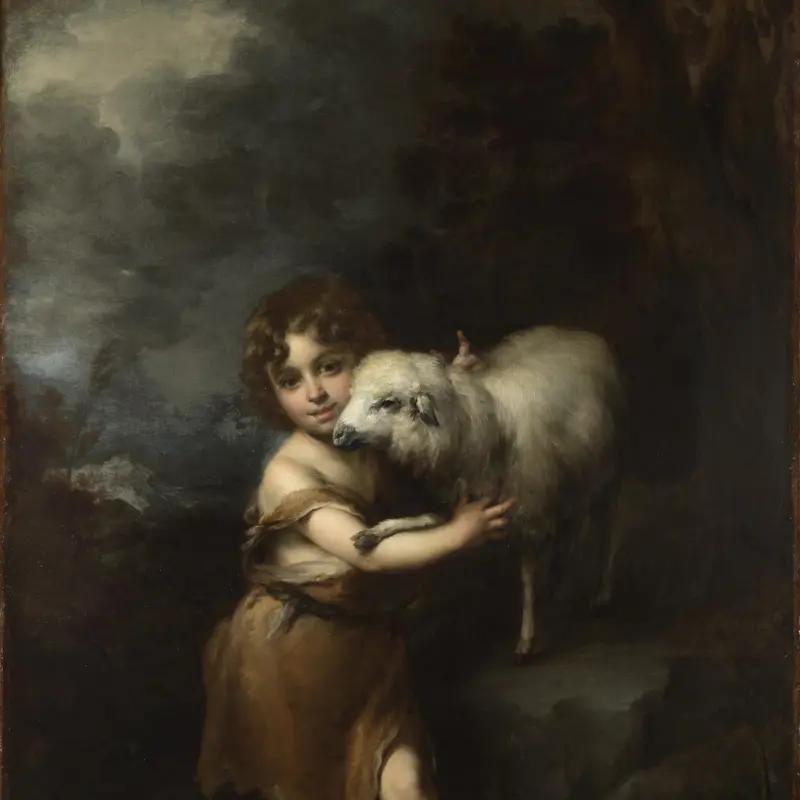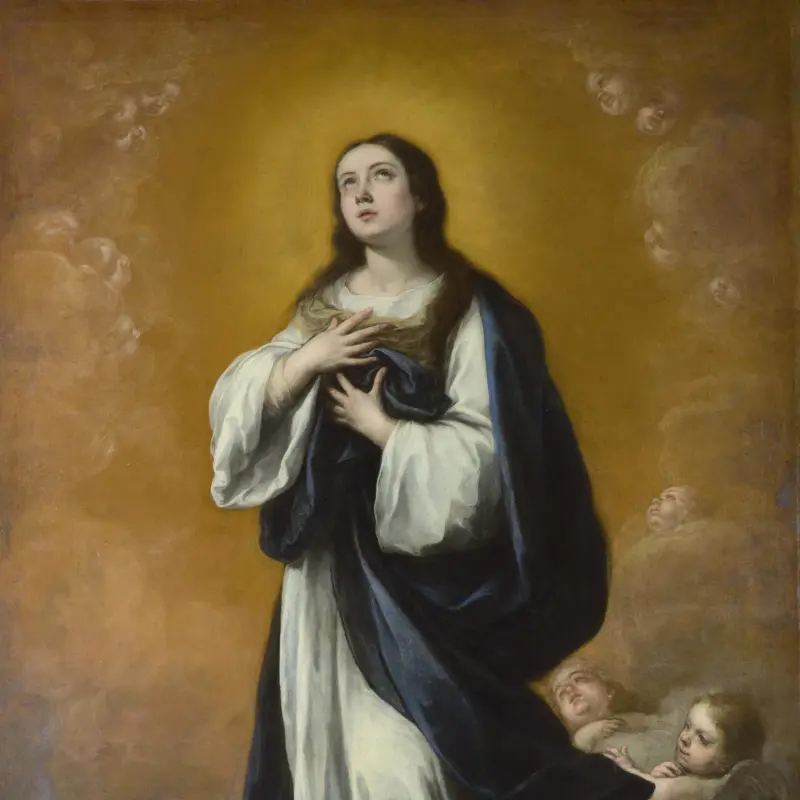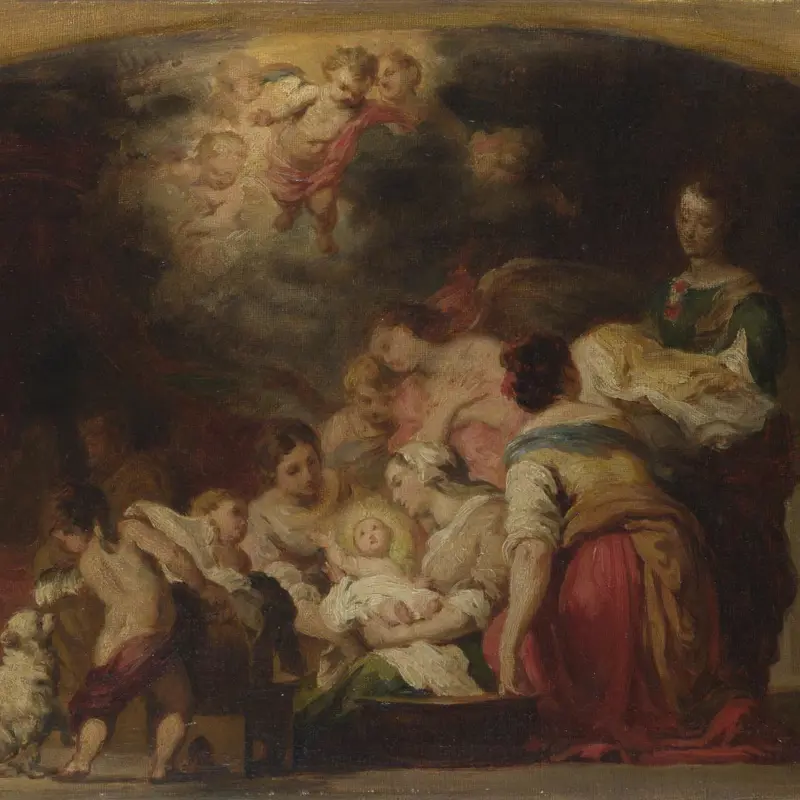Bartolomé Esteban Murillo, 'A Young Man Drinking', 1655-60
About the work
Overview
A young man cradles a bottle, presumably full of wine, and drinks from a smooth-sided glass. Vine leaves, a symbol traditionally associated with Bacchus, the mischievous god of wine, garland his head. He looks at us with a conspiratorial gaze, and though he might appear to be encouraging us to join him, the possessive way in which he guards the bottle suggests that he might well keep its contents all to himself.
Genre paintings are rare in the work of Murillo, and the subject of this picture remains enigmatic. The young man may be drinking wine, but he is doing so with dignity and care, holding the glass daintily by its base. He is perhaps a server at a tavern, but the reference to Bacchus better explains his mischievous expression.
The painting, now widely accepted as by Murillo, was once considered to be by an eighteenth-century imitator.
Key facts
Details
- Full title
- A Young Man Drinking
- Artist
- Bartolomé Esteban Murillo
- Artist dates
- 1617 - 1682
- Date made
- 1655-60
- Medium and support
- oil on canvas
- Dimensions
- 62.8 × 47.9 cm
- Acquisition credit
- Bequeathed by John Staniforth Beckett, 1889
- Inventory number
- NG1286
- Location
- Room 30
- Collection
- Main Collection
- Frame
- 21st-century Replica Frame
Provenance
Additional information
Text extracted from the ‘Provenance’ section of the catalogue entry in Neil MacLaren, revised by Allan Braham, ‘National Gallery Catalogues: The Spanish School’, London 1988; for further information, see the full catalogue entry.
Exhibition history
-
2022Murillo: From Heaven to EarthKimbell Art Museum18 September 2022 - 29 January 2023
Bibliography
-
1756P. Remy, Catalogue raisonné des tableaux, sculptures, tant de marbre que de bronze, desseins et estampes des plus grands maîtres… qui composent le cabinet de feu monsieur le Duc de Tallard, Paris, 22 March 1756 - 13 May 1756
-
1811F.L. Regnault-Delalande, Catalogue raisonné d'objets d'arts du cabinet de feu M. de Silvestre, Paris 1811
-
1851P.-J. Mariette, Abecedario de P. J. Mariette: Et autres notes inédites de cet amateur sur les arts et les artistes, eds P. de Chennevières and A. de Montaiglon, 6 vols, Paris 1851
-
1952Maclaren, Neil, National Gallery Catalogues: The Spanish School, London 1952
-
1970N. MacLaren and A. Braham, The Spanish School, 2nd edn, London 1970
-
1977M. Haraszti-Takács, 'Pedro Núñez de Villavicencio, disciple de Murillo', Bulletin du Musée Hongrois des Beaux-Arts, 48-49, 1977, pp. 129-55
-
1978J.A. Gaya Nuño, L'opera completa di Murillo, Milan 1978
-
1981D.A. Íñiguez, Murillo. Su vida, su arte, su obra, Madrid 1981
-
1981E. Young, 'Murillo: The Definitive Monograph: Review: Diego Angulo Íñiguez, Murillo. Su Vida, su arte, su obra, 1981', Apollo, CXIV/236, 1981, pp. 255-7
-
1982E. Harris, 'Review of Angulo Íñiguez', The Burlington Magazine, CXXIV/957, 1982, pp. 766-8
-
1983M. Haraszti-Takács, Spanish Genre Painting in the Seventeenth Century, Budapest 1983
-
1983C. Ressort, Murillo dans les musées français, Paris 1983
-
1988Maclaren, Neil, revised by Allan Braham, National Gallery Catalogues: The Spanish School, 2nd edn (revised), London 1988
-
1999A. Morel d'Arleaux, 'Origen y vicisitudes de cuatro óleos inéditos del siglo XVII que pertenecieron a la Colección Real', Goya, 269, 1999, pp. 66-82
-
2001
C. Baker and T. Henry, The National Gallery: Complete Illustrated Catalogue, London 2001
-
2001X. Brooke and P. Cherry, Murillo: Scenes of Childhood (exh. cat. Dulwich Picture Gallery, 14 February - 13 May 2001; Alte Pinakothek, 23 May - 26 August 2001), London 2001
-
2004G. Cavalli-Björkman et al., Falskt and äkta (exh. cat. Nationalmuseum, 26 February - 23 May 2004), Stockholm 2004
About this record
If you know more about this work or have spotted an error, please contact us. Please note that exhibition histories are listed from 2009 onwards. Bibliographies may not be complete; more comprehensive information is available in the National Gallery Library.

